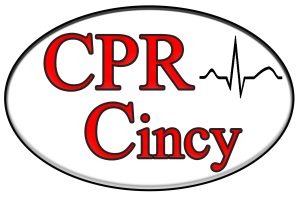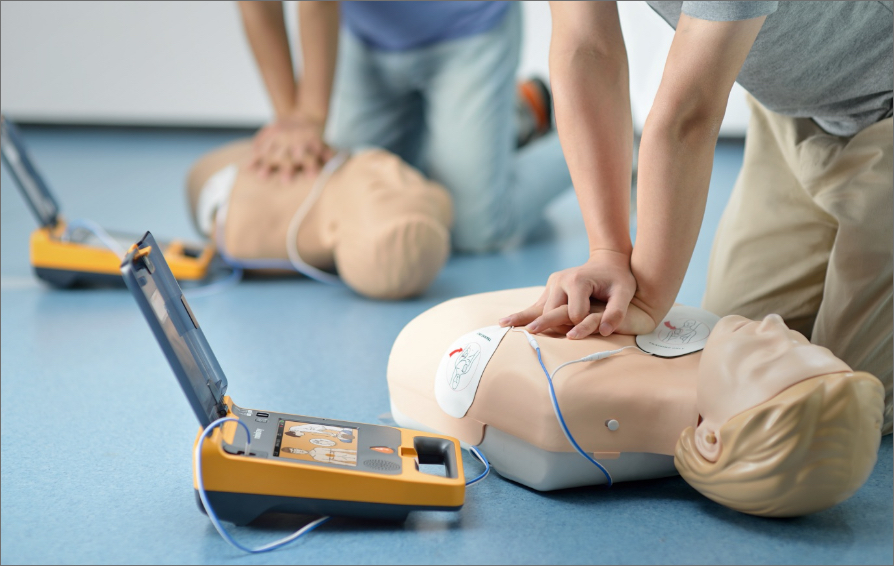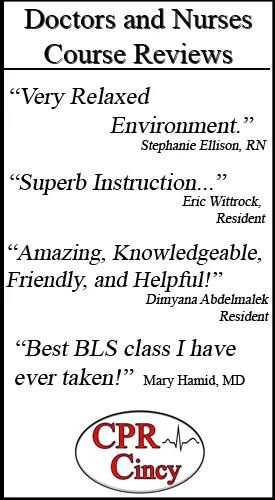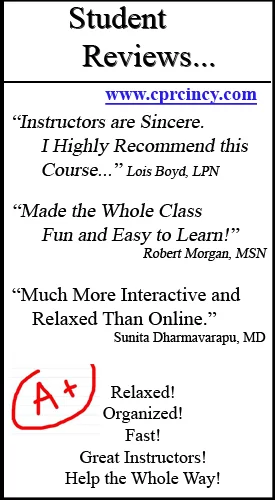In our ever-changing world, being equipped with life-saving skills has become more crucial than ever before. Cardiac emergencies can happen at any time, and the ability to respond swiftly and effectively can make the difference between life and death. One common question that often arises is, “Is AED (Automated External Defibrillator) certification the same as CPR (Cardiopulmonary Resuscitation)?” This guide’ll delve into the distinctions between AED certification and CPR, why they are essential, and how you can obtain both certifications to enhance your life-saving abilities.
Understanding CPR (Cardiopulmonary Resuscitation)
CPR, or Cardiopulmonary Resuscitation, is a life-saving technique designed to maintain blood circulation and oxygenation when a person’s heart and breathing have stopped. Its primary purpose is to keep vital organs functioning until professional medical help arrives. CPR involves a series of steps, including chest compressions and rescue breaths, aimed at restoring a person’s heartbeat and breathing.
The CPR process consists of several crucial steps, each designed to maximize the chances of survival in a cardiac emergency. These steps typically include assessing the victim, calling for help, performing chest compressions, and administering rescue breaths. Proper CPR technique is vital in these critical moments.
What is AED Certification?
AED certification, on the other hand, focuses on training individuals to use Automated External Defibrillators (AEDs) effectively. AEDs are portable devices that can analyze a person’s heart rhythm and, if necessary, deliver an electric shock (defibrillation) to restore a normal heart rhythm. AED certification ensures that individuals can operate these devices safely and efficiently in emergencies.
AEDs play a pivotal role in saving lives during sudden cardiac arrests. When a person’s heart goes into a life-threatening arrhythmia, AEDs can deliver a controlled electric shock to reestablish a normal heartbeat. These devices are user-friendly and can be used by bystanders until professional medical help arrives, significantly increasing the chances of survival.
Key Differences Between AED Certification and CPR
While both AED certification and CPR training are essential life-saving skills, they are not the same. Here are some key distinctions:
- Focus and Application: CPR primarily involves chest compressions and rescue breaths to circulate blood and oxygen manually. AED certification focuses on using defibrillators to restore the heart’s normal rhythm electronically.
- Equipment and Intervention: CPR requires no specialized equipment other than your hands and the knowledge of proper technique. AED certification involves the use of a specific device (AED) that requires training to operate correctly.
- Complementarity: AED certification often complements CPR training. While CPR is essential for maintaining circulation, an AED can be a critical addition to addressing specific heart rhythm issues, making them valuable in tandem.
- Scenarios: CPR is applicable in various cardiac emergencies, including cases where an AED might not be immediately available. AEDs are specifically used when a person is experiencing a sudden cardiac arrest with specific arrhythmias.
The Importance of Both AED Certification and CPR
The significance of obtaining both AED certification and CPR training cannot be overstated. Here’s why it’s essential:
Enhanced Preparedness: Having both certifications ensures that you are well-prepared to respond effectively to a broader range of cardiac emergencies.
Comprehensive Response: While CPR maintains circulation, AEDs can address specific heart rhythm issues, leading to a more comprehensive approach to saving lives.
Increased Chances of Survival: AEDs significantly increase the chances of survival in sudden cardiac arrests by promptly restoring a normal heart rhythm.
How to Get AED Certified and CPR Trained
Obtaining AED certification and CPR training is accessible and essential. Accredited organizations and institutions offer these certifications. Here’s how to get started:
Research Accredited Providers: Identify accredited organizations or institutions that offer AED certification and CPR training.
Choosing the Right Certification: This depends on your specific needs and circumstances. If you want to be prepared for a broader range of cardiac emergencies, it’s advisable to obtain both AED certification and CPR training. Consider your professional role, environment, and the level of responsibility you have in responding to cardiac events.
Choose the Right Course: Select the course that best suits your needs, whether you’re a healthcare professional or a layperson. Courses may be available in both online and in-person formats.
Enroll and Complete the Course: Follow the registration process and engage actively in the course materials. Be sure to complete the course to gain a thorough understanding of the skills and techniques.
AED certification and CPR training are both invaluable life-saving skills, but they serve different purposes. While CPR is essential for maintaining blood circulation and oxygenation, AEDs play a critical role in restoring normal heart rhythms during specific cardiac emergencies.
To be well-prepared for a wide range of scenarios and to maximize your ability to save lives, it is highly advisable to obtain both AED certification and CPR training. These skills are complementary and significantly increase the chances of a positive outcome in cardiac emergencies.
So, is AED certification the same as CPR? No, they are distinct but essential components of cardiac emergency preparedness. However, many training centers offer a combined CPR and AED certification. Don’t wait; take the initiative to acquire both certifications and make a difference when it matters most.
Ready to get CPR certified in Cincinnati? Don’t wait, sign up for a CPR certification course at CPR Cincinnati today!
As an American Heart Association training site, CPR Cincinnati offers top-quality BLS, ACLS, PALS, and First Aid training. Their hands-on, stress-free classes ensure you’ll be fully prepared to administer CPR and other lifesaving skills.
CPR certification gives you the power to save lives. Whether you need certification for healthcare, school, or work, CPR Cincinnati has a class that fits your schedule. Their experienced instructors will ensure you gain confidence in your abilities.
Don’t put it off – get CPR certified NOW at the best training site in Cincinnati. Visit acls-bls-cincinnati.com to view class dates and register online. Make an investment in yourself and your community by signing up for CPR certification at CPR Cincinnati today!






